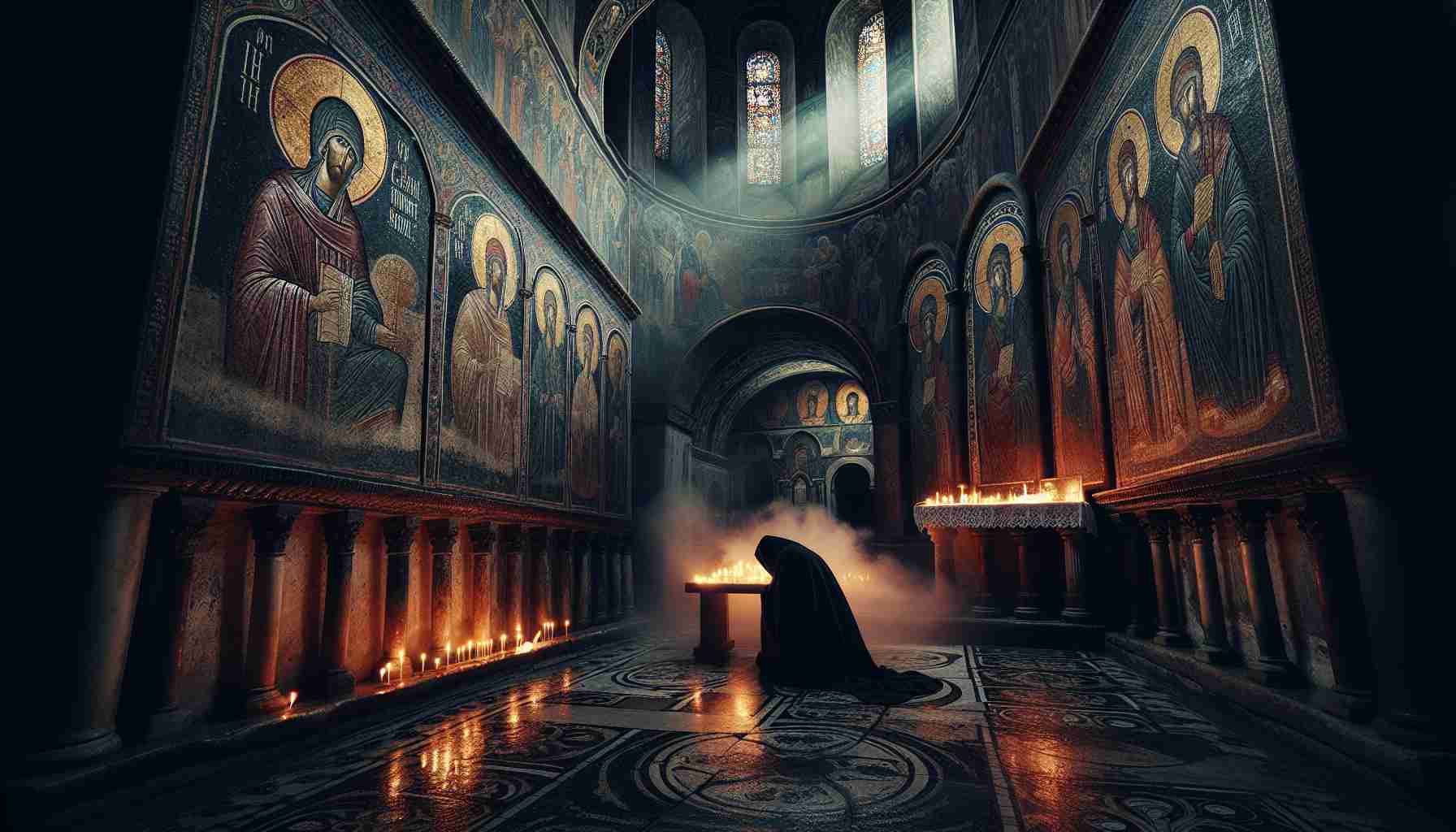

The bells of the Lateran Basilica rang hollow on that May morning in 904, their iron tongues scraping the ash-filled air above Rome. Smoke slithered around the bell towers, the stench of burning parchment and rotting ambition wafting through the corridors of the Holy See. Below, the noble families of Rome jostled in the marble hall, not to pray but to deal, not to glorify but to claim.
Sergius, once a bishop cast aside, now stood at the altar beneath mosaics chipped by centuries and indifference. His eyes, aging and narrow, flicked over the assembled clergy. Not a man among them bowed without motive. The coronation would be formal, divine vestments wrapped over mortal compromise.
Once, as a young acolyte, Sergius had stood here when sunlight still filtered through unstained glass and choristers sang Psalm 84 with unfeigned longing: “How lovely is your dwelling place, O Lord of hosts!” But decades had not been kind. Rome’s heart had become a tangled knot of vice and vengeance, and the Church with it.
The sun dimmed further as Marozia entered, a whisper in velvet — daughter of Theophylact, the most powerful man in Rome. Her presence needed no fanfare. It carried power as thick as incense. Some said she was Sergius’s lover. Some said she was the mother of his child — the future Pope John XI. All Rome had said it, in whispers and drunken jeers. Sergius never denied it.
In the open courtyard, beggars mocked the pageantry. “Saeculum Obscurum,” muttered a Franciscan to no one in particular, “The dark age of the papacy comes cloaked as royalty.” The words would stick, later codified by scholars who named these years the darkest since Peter’s own footsteps stained the sand outside Jerusalem.
Yet still the crown descended upon Sergius’s head.
Some resisted. In whispers. In prayer.
Within the belly of the Saint Clement Basilica not far away — older than many emperors’ tombs, carved with patches of 4th-century frescoes — a monk read from the Gospel of Matthew to a candlelit gathering: “And I tell you that you are Peter, and on this rock I will build my church...” He lingered on the next line, voice a rasp of conviction in the spit-polished gloom: “...and the gates of Hades will not overcome it.”
The words rang heretical to power-drunk ears, but heavenly to the hearts of those watching Rome crumble under its own pride. This subterranean basilica, itself layered above earlier temples razed by imperial Rome, had become a cradle of quiet rebellion — not of swords, but of Scripture. There, faithful scribes copied gospel pages behind frescoes that bore saints with wide, enduring eyes. Some bled Scripture into marginal notes, their quills defiant against deceit.
No army stood to defend them, only the promise that Truth did not need advantage to endure — only the breath of the Spirit and the memory of Christ's words.
Meanwhile, Pope Sergius expelled clergy who had stood beside Pope Formosus during the macabre “Cadaver Synod,” where even the deceased were not beyond vengeance. Burying truth was not enough; it had to be exhumed and tried. The body of Formosus had been dug up, robed, and judged by Pope Stephen VI years prior — an act of such grotesque symbolism that even the ruins of pagan temples flinched.
Yet Sergius upheld it. Reaffirmed it.
He replaced bishops, pardoned murderers, fathered a pope — and ruled.
And still, the Church lived.
Not in the Lateran halls where corruption reeked of spilled wine and whispered treason, but in the cellars where women read Paul’s letters aloud to their children, where elders broke bread and prayed over oil-streaked suppers, where the Gospel was sewn into memory because the books might be burned.
Stone could be defiled. Gold redirected. Names sullied. But underneath, beneath even the weight of centuries of imperial rot, lay the rock of the Church — the promise — crafted not by Sergius or Marozia or any noble jealous of heaven’s keys. The rock was Christ. It had spoken through fishermen and outlasted emperors. It would outlast Sergius too.
And in the tomb-shadowed dusk of the catacombs, a boy learned the words from Matthew, traced them with ink crooked by candle tremble. His handwriting was clumsy, but the verse poured through his efforts like water on dry soil. Centuries later, his page would be found, folded under relics, its ink faded but clear.
A troubled papacy began that day, historians wrote.
Yet Scripture remained unbroken.
The line of Peter bent but did not sever.
Because the Church — the true Church — had never been the throne, nor the crown, nor the man warm in velvet as the world chilled around him.
It was the flame in hidden rooms, the whisper among faithful lips, the rock — not made by Rome, but laid by Christ.
And the darkness did not overcome it.